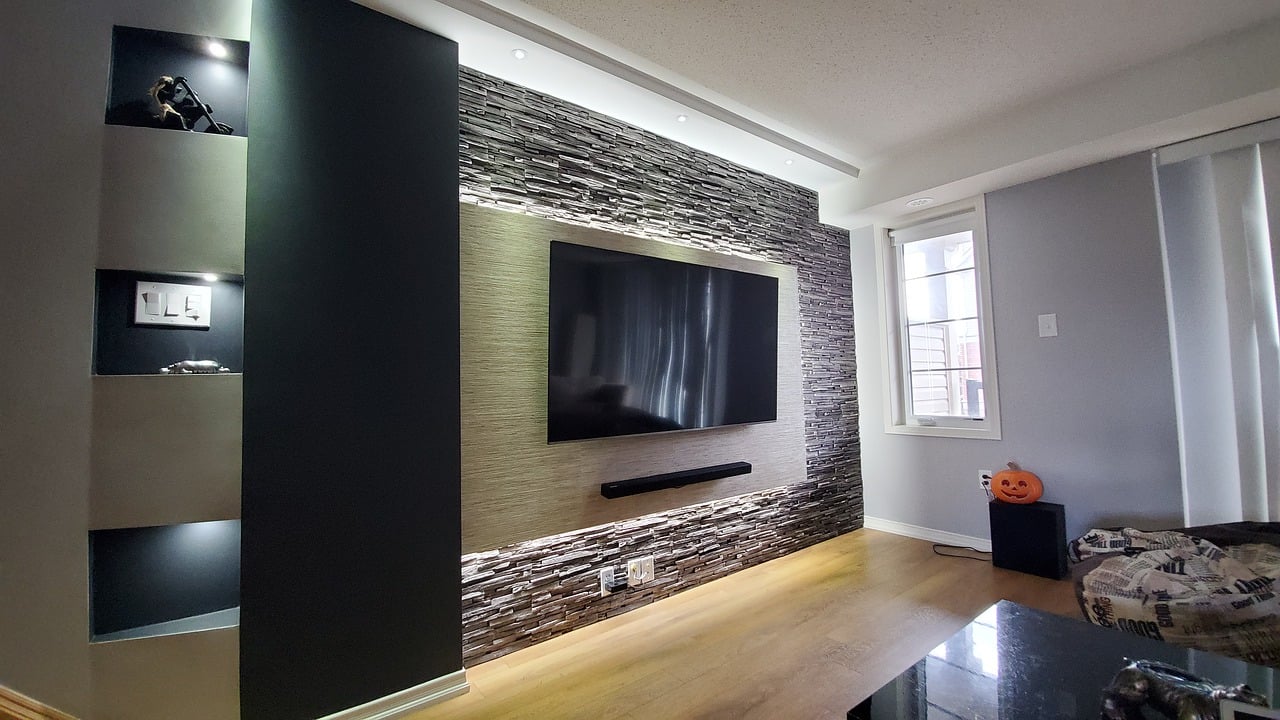Homeowners like yourself with a finished basement may have wondered whether your home insurance policy covers this additional living space. Understand what is covered and how to protect your investment by reading on to get into the details of whether insurance covers finished basements.
What is Covered by Home Insurance Policies
Home insurance policies typically provide coverage for the structure of your home, including the basement. This means that perils such as fire, smoke damage, vandalism, and water damage from burst pipes or water leaks are usually covered. However, review your policy to confirm the specific coverage and limits for your finished basement.
While most home insurance covers structural damage to your finished basement, additional coverage options may be available to address specific risks associated with this living space.
Reviewing your home insurance policy will help you determine the extent of coverage for your finished basement and any exclusions that may apply.
Home Insurance Coverage Options for Finished Basements
If you have a finished basement, consider additional coverage options to protect your investment. While home insurance policies typically cover the basics, there may be specific risks associated with finished basements that require extra protection.
Water Damage Coverage
One of the main risks for a finished basement is water damage. Depending on your insurance provider, you can add endorsements or riders to your policy that cover water damage caused by sump pump failure or sewer backup.
Personal Property Coverage
In addition to the structural aspects of your finished basement, consider the value of the personal belongings you have in that space. Adding personal property coverage to your home insurance policy can ensure that your valuable items are protected if they exceed the coverage limit.
Home Insurance Exclusions to Consider for Basements
Exclusions are specific situations or perils not covered by your insurance policy. However, you can take necessary precautions and explore additional coverage options to protect your finished basement under your current home insurance policy.
Hurricanes and Floods
One common exclusion to be aware of is coverage for damage caused by hurricanes and floods. Standard home insurance policies typically do not cover these perils, and you may need to purchase separate flood insurance to protect your finished basement in the event of a flood by assessing the risk of hurricanes and floods in your area.
Earthquakes
Another exclusion to consider is coverage for damage caused by earthquakes. Most home insurance policies do not include earthquake coverage, as earthquakes are classified as a separate and specific risk. If you live in an area prone to earthquakes, explore earthquake insurance options to ensure your finished basement is adequately protected.
Aging Infrastructure
Some insurance policies may exclude coverage for damage caused by aging infrastructure, such as outdated plumbing or electrical systems. If your finished basement relies on older infrastructure that could pose a higher risk of damage or loss, discuss this with your insurance provider. They can help you understand any limitations or exclusions related to your home’s infrastructure.
Mitigating Risks in Your Finished Basement
Taking proactive measures to mitigate risks can go a long way. By implementing these strategies, you can minimize the potential for damage and potentially even lower your insurance premiums.
Install a Sump Pump
A sump pump is a critical component in preventing flooding and water damage in your basement. It works by collecting excess water and pumping it away from your home’s foundation. Ensure your sump pump is installed correctly and regularly maintained to function properly when needed.
Waterproof the Basement Walls
Waterproofing your basement walls can provide an additional layer of protection against moisture intrusion. Consider applying waterproofing sealants or coatings to the interior walls and exterior foundation to prevent water infiltration and potential damage.
Maintain Proper Ventilation
Poor ventilation in your basement can lead to a buildup of moisture, which can contribute to mold growth and other issues. Ensure that your basement has proper ventilation, such as windows or vents, to allow air circulation. This can help prevent excess humidity and keep your basement dry.
Consult with professionals, such as contractors or basement specialists, to ensure you’re taking the appropriate steps to safeguard your investment.
When it comes to finished basements, home insurance policies generally provide coverage for structural damage and perils such as fire, smoke damage, vandalism, and water damage. However, it’s important to review your specific policy to fully understand the extent of coverage and any exclusions that may apply.
If you want additional coverage for specific risks associated with your finished basement, such as water damage from sump pump failure or sewer backup, you may have the option to add endorsements or riders to your policy. Consulting with your insurance provider is recommended to explore these options.
Remember that taking steps to mitigate risks in your finished basement, such as installing a sump pump and waterproofing the walls, can not only reduce the likelihood of damage but may also help lower your insurance premiums. Regular policy reviews and maintaining updated documentation are also crucial to ensure your coverage adequately protects your investment.
FAQ
Does home insurance cover finished basements?
Yes, home insurance policies typically provide coverage for the structure of your home, including the basement. However, it’s important to review your policy to confirm the specific coverage and limits for your finished basement.
What is covered by home insurance policies?
Home insurance policies typically cover perils such as fire, smoke damage, vandalism, and water damage from burst pipes or leaks. Review your policy for specific coverage details.
Can I add additional coverage options for my finished basement?
Depending on your insurance provider, you may be able to add endorsements or riders to your policy to cover specific risks associated with a finished basement, such as water damage from sump pump failure or sewer backup.
Are there any exclusions to consider for finished basements?
Some home insurance policies may exclude coverage for certain perils like floods or earthquakes. Review your policy and speak with your insurance provider to understand any limitations or exclusions that may apply.
How can I mitigate risks in my finished basement?
Taking steps such as installing a sump pump, waterproofing the basement walls, and maintaining proper ventilation can help reduce the likelihood of damage and potentially lower your insurance premiums.
How can I work with my insurance provider regarding my finished basement?
If you have questions about coverage or want to explore additional options, contact your insurance provider. They can provide specific information about your policy and any available endorsements or riders.
Should I compare insurance policies for my finished basement?
It’s wise to compare insurance policies to ensure you have adequate coverage for your finished basement. Look for policies that specifically mention coverage for finished basements and compare limits, deductibles, and premium costs.
How important are regular policy reviews for finished basements?
Regular policy reviews, especially if you have a finished basement, can help ensure your coverage adequately protects your investment. Changes to the value or renovations may require adjustments to your coverage limits.
What factors affect insurance coverage for finished basements?
Factors such as the age and condition of your home, the property location, and the types of perils common in your area can affect insurance coverage. Discuss these factors with your insurance provider to fully understand your coverage.




